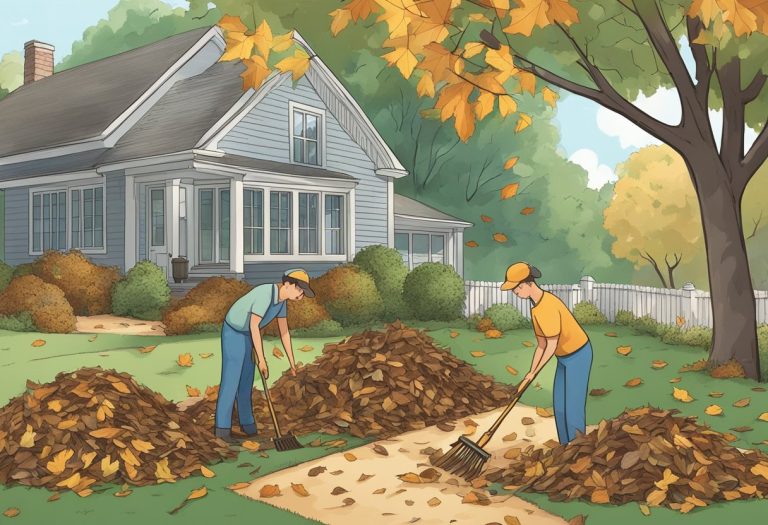Xeriscaping for Water Conservation in Sacramento: Embracing Drought-Resistant Landscapes

Xeriscaping is a sustainable landscaping method that focuses on water efficiency and eco-friendly practices. It’s especially relevant in Sacramento, where drought conditions often necessitate stricter water conservation methods.
Fundamentals of Xeriscape Design
Key elements come into play when designing a xeriscape landscape:
- Planning and Design: It starts with a thoughtful design that takes into account the local climate and soil conditions. The layout is crucial to minimize water use and maximize the aesthetic appeal.
- Soil Analysis and Improvement: Soil must be examined and possibly amended to retain moisture and provide proper drainage to support drought-tolerant plant life.
- Appropriate Plant Selection: Choosing indigenous and drought-tolerant plants is the cornerstone of xeriscaping. These plants require less water than their non-native counterparts.
- Efficient Irrigation: Installing drip or soaker hoses ensures targeted watering that reaches plant roots with minimal waste.
- Use of Mulches: Organic or inorganic mulches are used to reduce evaporation, prevent weed growth, and maintain soil temperature.
- Practical Turf Areas: Limiting grassy spaces to functional areas reduces water consumption significantly. Alternative groundcovers can be used elsewhere.
- Maintenance: Regular maintenance such as weeding, pruning, and monitoring the irrigation system helps to sustain the health of the xeriscape landscape over time.
Benefits of Xeriscaping
The advantages of xeriscaping are substantial:
- Water Conservation: Xeriscaping can significantly reduce outdoor water use by as much as 50-75%.
- Maintenance Savings: It requires less maintenance due to the reduced need for watering, mowing, and fertilizing.
- Environmental Protection: The use of native plants supports local wildlife and helps maintain biological diversity.
- Aesthetic Value: Xeriscape landscaping can be equally as beautiful as traditional landscapes, employing a variety of plants, textures, and colors to create attractive outdoor spaces.
Xeriscaping represents a fusion of practicality and beauty, facilitating eco-friendly landscapes that thrive even under restrictive water conditions.
Xeriscape Planning and Soil Management

In Sacramento, creating a water-conserving landscape begins with thorough Xeriscape planning and effective soil management. These elements are crucial for establishing a resilient and efficient backyard environment that supports drought-tolerant plants while conserving water.
Soil Analysis and Preparation
Proper soil analysis is the first step in Xeriscape planning in Sacramento. One must test the soil to gauge its type, pH level, and nutrient content. Soil preparation then follows, aimed at enhancing its water absorption and retention capabilities. Incorporating organic matter, such as compost, can improve the soil structure and fertility. This, in turn, supports the growth of drought-tolerant plants and reduces the need for frequent watering. It is also beneficial to apply a layer of mulch around plants to minimize evaporation, regulate soil temperature, and reduce weed growth.
Selecting Drought-Tolerant Plants
Choosing the right drought-tolerant plants is pivotal for a successful Xeriscape in Sacramento. These plants are specially adapted to thrive with minimal water, making them perfect for California’s climate. When selecting plants, focus on species native to the region, as they’re acclimatized to the local conditions and require less maintenance. A variety of California native plants provide a palette for a beautiful, water-efficient landscape design. Some popular choices might include California poppy, coyote mint, or purple needlegrass. Planning a garden with these species can create a lush and vibrant backyard ecosystem that contributes to water conservation efforts.
Xeriscape Implementation and Techniques

Xeriscape landscaping optimizes water usage through specific design principles and, when implemented in Sacramento, can lead to significant water conservation. The selection of drought-tolerant plants and efficient irrigation systems are cornerstones of xeriscape landscaping.
Irrigation Systems and Watering Strategies
An efficient irrigation system is fundamental to xeriscape success. Drip irrigation is often recommended because it directs water to the roots of plants, minimizing waste. Watering strategies should include zoning, where plants with similar water needs are grouped together to reduce water usage. This approach ensures that each zone receives the appropriate amount of moisture without overwatering. In Sacramento, where water conservation is essential, implementing a smart irrigation controller that adjusts watering schedules based on weather conditions can lead to more efficient water use.
- Key Irrigation Techniques:
- Use of drip irrigation systems
- Grouping plants with similar water requirements
- Installing smart irrigation controllers
Incorporating Hardscapes and Mulches
Hardscape elements such as stone paths or patios reduce water demand by covering areas that would otherwise require irrigation. They also add aesthetic value and functionality to the landscape. In addition, using mulch in garden beds is an effective technique in xeriscape landscaping. It helps retain soil moisture, suppresses weeds that compete for water, and regulates soil temperature. In Sacramento’s climate, choosing an appropriate mulch, such as bark or gravel, can significantly reduce evaporation and the need for frequent watering.
- Hardscaping Benefits:
- Decreases water usage
- Enhances landscape aesthetics
- Mulching Benefits:
- Retains soil moisture
- Suppresses weed growth
- Regulates soil temperature
Maintenance and Environmental Benefits

Xeriscaping in Sacramento presents a strategic approach to landscaping that emphasizes water conservation while offering significant environmental benefits. The practice involves selecting drought-tolerant plants and optimizing irrigation systems, resulting in lower water use and reduced utility bills.
Conserving Water and Reducing Bills
By implementing xeriscaping, homeowners reduce their landscape’s water consumption significantly. The use of native and drought-resistant plants, along with efficient irrigation techniques, can lead to lower monthly water bills. In Sacramento, residents can engage in water conservation through programs that provide incentives for xeriscaping. For example, the Sacramento County Water Agency offers up to $2,500 for replacing turf with drought-tolerant landscaping options, ensuring both financial and environmental benefits.
Supporting Biodiversity and Eco-Friendly Practices
Xeriscaping also fosters biodiversity by creating habitats for local wildlife, birds, and beneficial insects. Choosing native plants supports the regional ecosystem, and the reduction of lawn space diminishes the need for fertilizers and pesticides, minimizing the environmental footprint. These eco-friendly landscaping practices complement the area’s microclimate, leading to a more sustainable interaction with Sacramento’s surrounding environment. According to experts in the field, xeriscaping not only accommodates the local climate but also becomes part of a comprehensive approach towards soil conservation and urban environmental protection, as seen in ecological discussions around Sacramento.






